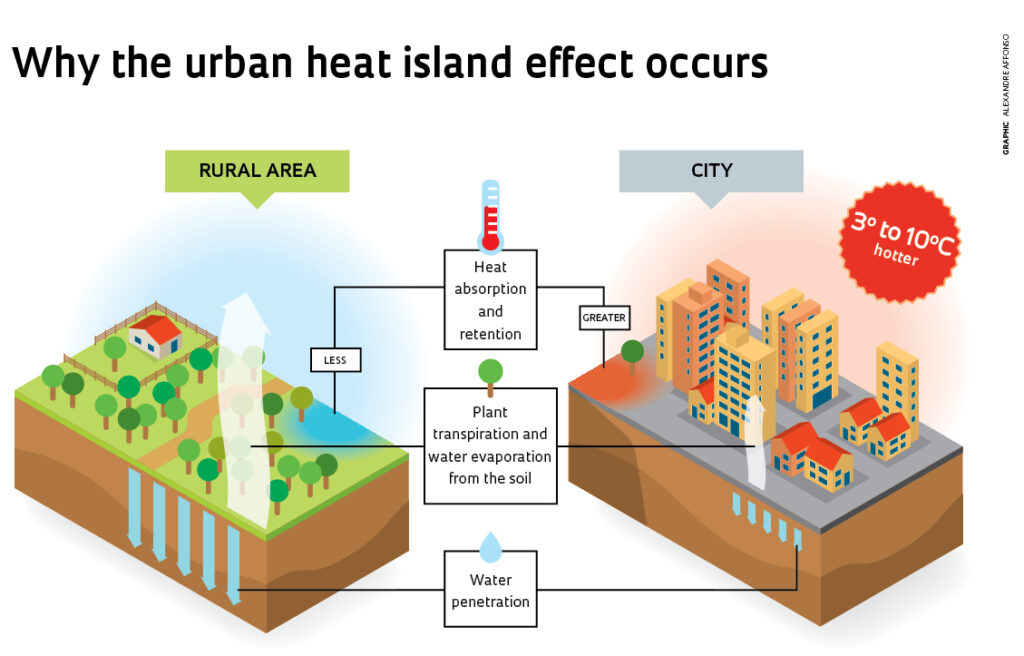What are microclimates?
Microclimates are small pockets where the weather is different than nearby areas. This could be as small as a bend in the road where the air from the ocean or the sunlight is affecting the weather conditions, or slightly larger areas like a mountaintop which has different atmospheric conditions than the base of the mountain.
Natural microclimates can exist around bodies of water that have land nearby, abrupt changes in elevation, or a combination of both. Mountain passes are famous for having numerous microclimates– especially during the winter months– that can be extremely treacherous. Depending on the orientation of the road and the rapid change in elevation, weather and road conditions can go from rainy and wet to snowy and snow packed in just hundreds of feet.

A good example of this phenomenon happens along the I-70 corridor in Colorado from Denver to Vail. The 100-mile stretch of highway boasts at least a dozen different microclimates along the way. The West Coast highways in California are notorious for rapidly changing microclimates which can take you from sunny and clear to fog with zero visibility over very short distances. Anyone in Chicago or other areas around the Great Lakes also can testify to the truth behind the “lake effect,” where cool air blows in from the lake and causes snowfall once the clouds accumulate over the land. In areas like these, a weather forecast for the entire region isn’t going to do much good.
Microclimates in Cities or Man-Made Microclimates
There are also man-made microclimates, created by urbanization of areas that were previously dominated by vegetation, that create a microclimate called the urban heat island. This occurs because pavement heats up much quicker than grassy surfaces. Heat islands influence the climate by increasing temperatures as well as making small-scale changes in the wind. Cities around the world have tried dozens of different techniques to fight heat islands, from planting more trees with large canopies to painting the roads white. Man-made microclimates can also occur around power plants. Believe it or not, steam released from power plants can seed the clouds in a local area, which keep temperatures cooler and often create or enhance precipitation and/or fog. Cities like Fairbanks, AK and Boulder, CO have man-made microclimates enhanced by steam from the local power plants.
Forecasting Microclimates
In order to solve the weather forecast issues around microclimates, there are now environmental sensing stations with cameras that are cost-effective enough to deploy in each unique microclimate. These weather stations combine atmospherics (like air temperature, humidity, and wind) with pavement temperatures for road weather observations. These data points not only aid in diagnosing the changing conditions over the problematic areas, but also help the models make better forecasts in these microclimates over longer periods of time.
Monitoring with Mini-weather stations
This type of technology enables meteorologists, city officials, snow removal professionals, and anyone else battling the weather to better strategically and tactically understand weather that previously was near impossible to predict. The more mini-weather stations we deploy, the better all of our forecasts get, especially when it comes to microclimates.

